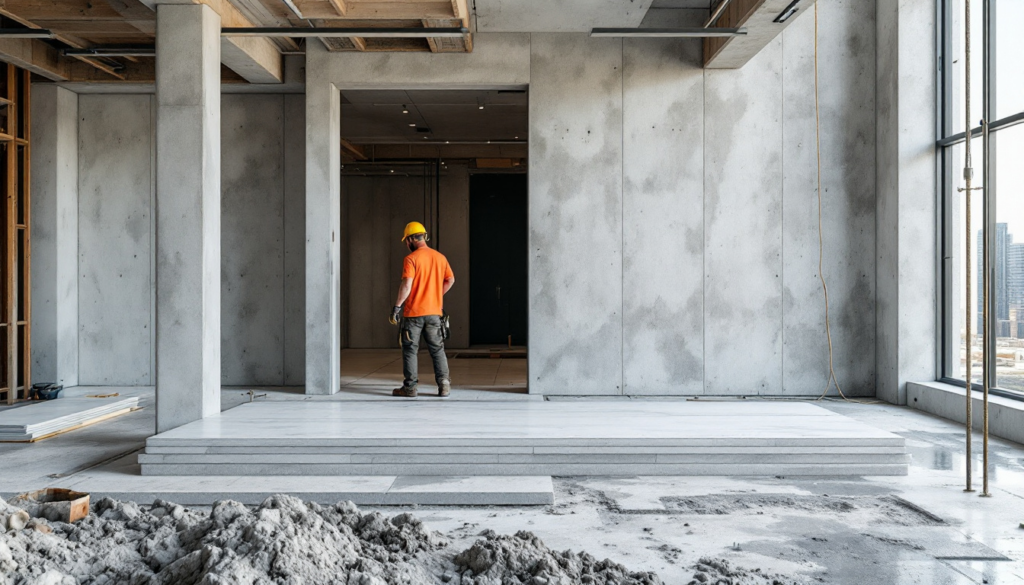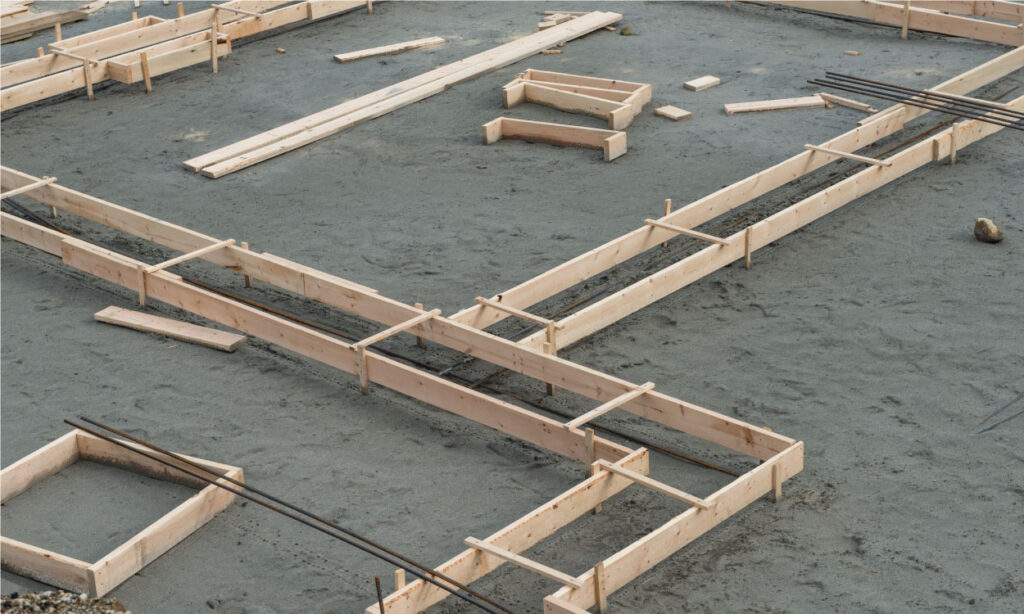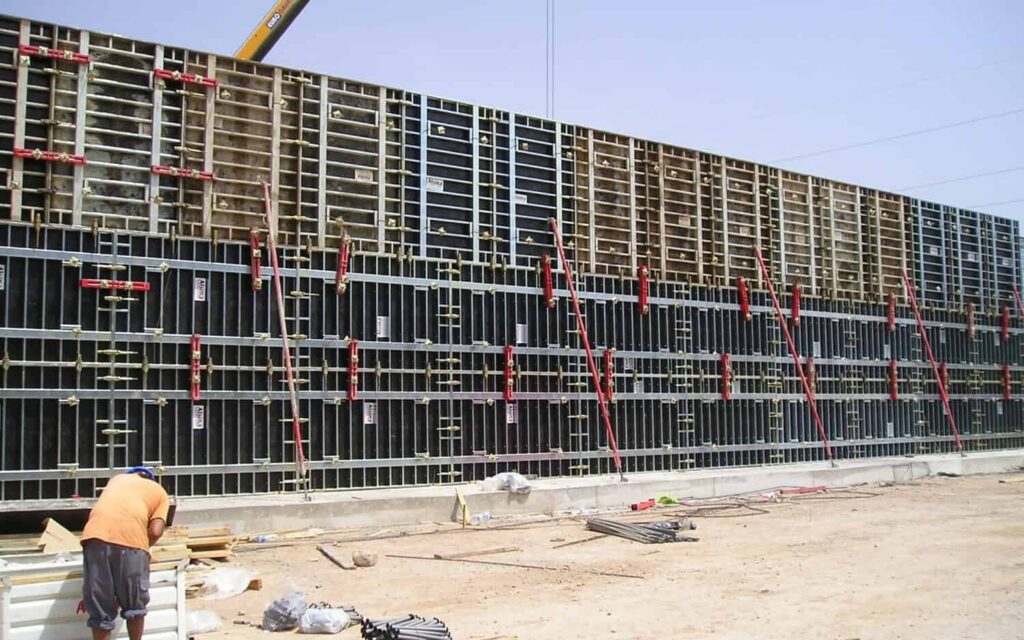In the construction industry, the importance of formwork cannot be overstated. It is the framework that shapes and supports concrete until it gains sufficient strength to stand on its own. Among the various materials used for formwork, plywood has emerged as a preferred choice for many builders and contractors. This article delves into the reasons why formwork plywood is essential for creating reliable concrete structures.
The Role of Formwork in Concrete Construction
Formwork serves as a temporary structure that holds freshly poured concrete in place while it sets and cures. It is crucial for achieving the desired shape and finish of concrete elements, such as walls, slabs, and columns. Without proper formwork, the integrity of the concrete structure can be compromised, leading to potential safety hazards and costly repairs. The importance of formwork cannot be overstated, as it directly influences the quality and longevity of the finished product, making it an essential component in the construction process.
Moreover, the design and installation of formwork plywood require careful planning and execution. Engineers and contractors must consider various factors, such as the type of concrete mix, environmental conditions, and the specific requirements of the project. This meticulous attention to detail ensures that the formwork can withstand the pressures exerted by the concrete and any external forces, thus safeguarding the structural integrity of the building. Additionally, the use of advanced technologies, such as 3D modelling and prefabrication, has revolutionised the way formwork is designed and implemented, leading to increased efficiency and reduced waste on construction sites.

Types of Formwork
There are several types of formwork used in construction, including traditional timber, steel, and plastic. However, plywood formwork has gained popularity due to its unique advantages. It combines the benefits of durability, versatility, and cost-effectiveness, making it a go-to option for many construction projects. Plywood formwork is particularly valued for its lightweight nature, which facilitates easier handling and installation, while still providing the necessary strength to support heavy loads. Additionally, it can be reused multiple times, which not only reduces material costs but also aligns with sustainable building practices.
Read more on: 5 Reasons to Buy Formply for Your Next Project
In recent years, the introduction of modular formwork systems has further transformed the landscape of concrete construction. These systems are designed to be easily assembled and disassembled, allowing for rapid construction and flexibility on site. They often incorporate adjustable components, enabling builders to create complex shapes and designs with relative ease. This adaptability is especially beneficial in projects that require unique architectural features or where space constraints are a concern. As the construction industry continues to evolve, the demand for innovative formwork solutions is likely to grow, driving advancements in materials and design techniques.
Key Functions of Formwork
Formwork not only shapes the concrete but also supports it during the curing process. It must withstand the weight of the wet concrete and any additional loads that may occur during construction. Furthermore, formwork plays a vital role in ensuring the surface finish of the concrete, which can affect both aesthetics and functionality. A well-constructed formwork system can lead to a smooth, even surface that enhances the overall appearance of the structure, while also minimising the need for extensive finishing work later on.
Additionally, formwork helps to control the curing environment of the concrete, which is critical for achieving optimal strength and durability. By retaining moisture and protecting the concrete from adverse weather conditions, such as extreme heat or cold, formwork contributes to a more uniform curing process. This is particularly important in large-scale projects where variations in curing conditions can lead to inconsistencies in the concrete’s performance. As such, the role of formwork extends beyond mere support; it is integral to the successful execution of concrete construction, ensuring that the final product meets both structural and aesthetic standards. Read more about environment on https://sparks.learning.asu.edu/videos/thermal-comfort
Advantages of Plywood Formwork
Plywood is a popular material for formwork due to its numerous advantages over other materials. Its unique properties make it an ideal choice for various construction applications.

Durability and Strength
One of the primary benefits of plywood formwork is its durability. Plywood is made from multiple layers of wood veneer, which are glued together to create a strong and resilient panel. This construction method provides excellent resistance to warping and cracking, ensuring that the formwork remains intact throughout the pouring and curing process.
Moreover, plywood can withstand the weight of wet concrete, making it suitable for large-scale projects. Its strength allows it to be reused multiple times, providing a cost-effective solution for contractors. In fact, many construction companies report that plywood formwork can be reused for several cycles, significantly reducing material costs and waste. This longevity not only benefits the budget but also aligns with sustainable construction practices, as it minimises the need for new materials and reduces the overall environmental impact of a project.
Lightweight and Easy to Handle
Another significant advantage of plywood is its lightweight nature. Compared to steel formwork, plywood is much easier to handle and transport, which can save time and labour costs on site. Workers can quickly assemble and disassemble plywood formwork, leading to increased efficiency in the construction process.
This ease of handling also reduces the risk of injury on site, as workers can manoeuvre the panels with less effort. Consequently, the use of plywood formwork contributes to a safer working environment. Additionally, the lightweight characteristics of plywood allow for more flexible logistics, enabling teams to transport materials to remote or difficult-to-access locations without the need for heavy machinery. This adaptability can be particularly advantageous in urban settings where space is limited and construction sites are often congested.
Versatility in Design
Plywood formwork is highly versatile, allowing for a wide range of designs and shapes. It can be easily cut and shaped to fit specific project requirements, making it suitable for both standard and bespoke concrete structures. This flexibility enables architects and engineers to explore innovative designs without being constrained by the limitations of other formwork materials. Click here to find more about limitations.
Additionally, plywood can be used for various applications, including walls, slabs, and columns, making it a multi-functional choice for contractors. The ability to create custom shapes and curves with plywood opens up new possibilities for architectural creativity, allowing for the construction of unique features that enhance the aesthetic appeal of a building. Furthermore, the surface finish of plywood can be treated or coated to achieve different textures and appearances, providing even more options for design flexibility. This adaptability not only meets the functional needs of a project but also contributes to its overall visual impact, making plywood formwork a preferred choice among many professionals in the construction industry.
Environmental Considerations
In an era where sustainability is a growing concern, the environmental impact of construction materials is under scrutiny. Plywood, particularly when sourced from responsibly managed forests, offers an eco-friendly alternative to synthetic materials.
Sustainable Sourcing
Many plywood manufacturers adhere to sustainable forestry practices, ensuring that the wood used in their products is harvested responsibly. This commitment to sustainability not only helps preserve natural resources but also supports local economies. By investing in certified wood, builders can contribute to the maintenance of biodiversity and the protection of wildlife habitats, as these practices often involve careful management of forest ecosystems. Furthermore, the traceability of sustainably sourced plywood allows consumers to make informed choices, fostering a market that prioritises environmental stewardship.
Choosing plywood formwork can significantly reduce the carbon footprint of a construction project, making it a preferred option for environmentally conscious builders. The lightweight nature of plywood also means that it requires less energy to transport, further minimising its environmental impact. As the construction industry increasingly embraces green building practices, the demand for sustainable materials like plywood is likely to grow, driving innovation and efficiency in the sector.
Recyclability
Once plywood formwork has reached the end of its useful life, it can be recycled or repurposed, further reducing waste. Unlike plastic or metal formwork, which may end up in landfills, plywood can be transformed into other products or used as biomass fuel, contributing to a circular economy. This adaptability not only mitigates waste but also encourages a culture of re-use and recycling within the construction industry. For instance, old plywood can be repurposed into furniture, decorative items, or even new building materials, showcasing the versatility of wood as a resource.
Moreover, the biodegradability of plywood is another significant advantage. When disposed of properly, it breaks down naturally, returning nutrients to the soil, unlike synthetic materials that can persist in the environment for centuries. This natural lifecycle reinforces the importance of choosing materials that harmonise with ecological processes, making plywood an exemplary choice for those aiming to minimise their environmental footprint. As awareness of environmental issues continues to rise, the role of recyclable materials like plywood will undoubtedly become more central in discussions surrounding sustainable construction practices.
Cost-Effectiveness of Plywood Formwork
Cost is a crucial factor in any construction project, and plywood formwork offers significant financial advantages. Its durability, reusability, and ease of handling contribute to lower overall costs.
Initial Investment vs. Long-Term Savings
While the initial investment in plywood formwork may be higher than that of traditional timber, the long-term savings are substantial. Plywood can be reused multiple times, reducing the need for constant replacements. This reusability translates into lower material costs over the lifespan of a project.
Additionally, the ease of handling and quick assembly of plywood formwork can lead to reduced labour costs, making it a financially sound choice for contractors.
Minimising Waste
Efficient use of plywood formwork can also help minimise waste on site. Its versatility allows for precise cutting and fitting, reducing offcuts and leftover materials. By optimising material usage, contractors can further enhance the cost-effectiveness of their projects.
Best Practices for Using Plywood Formwork
To maximise the benefits of plywood formwork, it is essential to follow best practices during its use. Proper handling, maintenance, and installation techniques can significantly impact the quality of the final concrete structure.
Proper Handling and Storage
Plywood panels should be stored in a dry, flat area to prevent warping and damage. When handling the panels, care should be taken to avoid dropping or striking them, as this can compromise their integrity. Using appropriate lifting techniques and equipment can help ensure the panels remain in good condition throughout the construction process.
Installation Techniques
During installation, it is crucial to ensure that the formwork is securely braced and supported. This stability will prevent movement during the pouring of concrete, which can lead to defects in the finished structure. Additionally, using high-quality fasteners and sealants can help create a watertight formwork system, minimising the risk of leaks and ensuring a smooth finish.
Conclusion
In conclusion, formwork plywood is a vital component in the construction of reliable concrete structures. Its durability, lightweight nature, versatility, and environmental benefits make it an ideal choice for contractors and builders. By understanding the advantages of plywood formwork and implementing best practices, construction professionals can ensure the integrity and longevity of their concrete projects.
As the construction industry continues to evolve, the demand for efficient, cost-effective, and sustainable materials will only grow. Plywood formwork stands out as a solution that meets these needs, making it a key player in the future of concrete construction.
